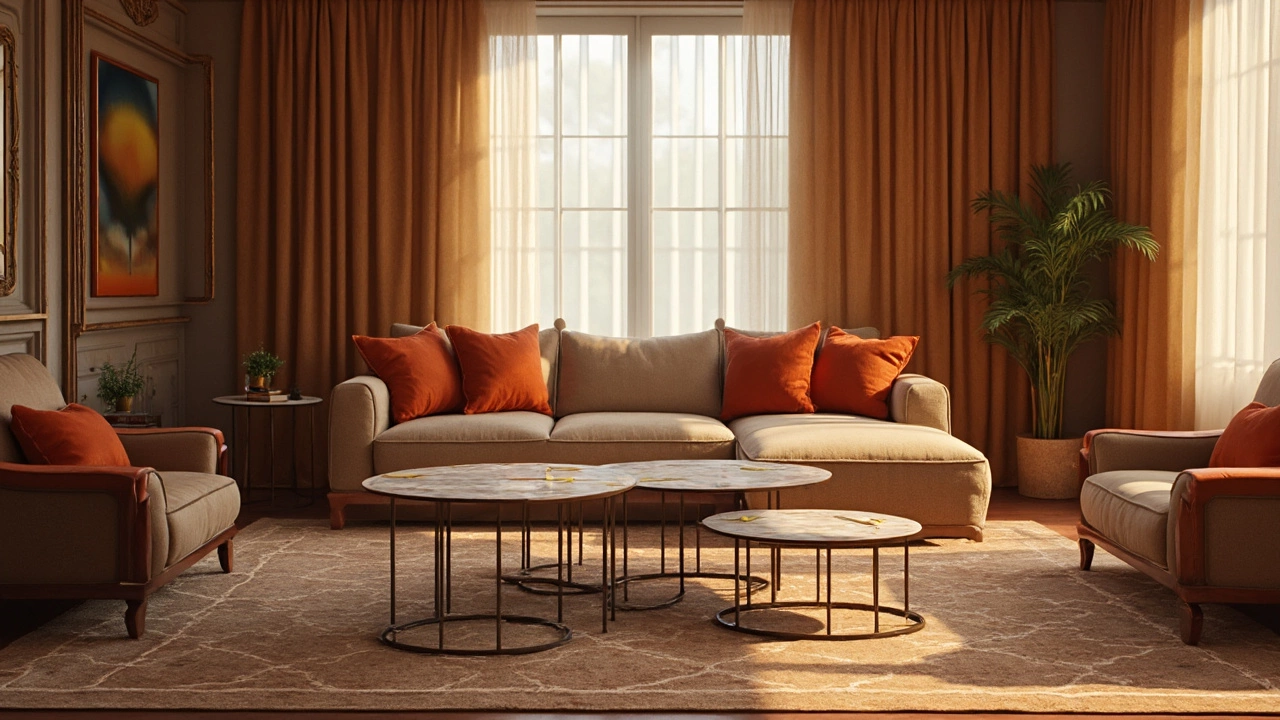Coffee Table Guide: Choose, Style, and Keep It Looking Great
Whether you’re setting up a new living room or just want to give your old coffee table a refresh, the right decisions start with a few simple questions. How big should it be? What height works best with a reclining sofa? And how do you protect the bottom from scratches? Let’s answer those fast so you can enjoy a functional, good‑looking centerpiece.
Picking the Right Size and Style
The first rule is to keep clearance in mind. Measure the distance from your sofa seat to the wall, then subtract about 12‑18 inches. That’s the maximum length your coffee table should be. If you have a reclining sofa, add a little extra room so the recliner arm doesn’t hit the table when you pull back.
Height matters too. Most coffee tables sit 16‑18 inches off the floor, which lines up nicely with a standard 18‑inch sofa seat. If you love lift‑top tables, aim for a top that rises to about 30 inches when opened – perfect for a quick snack or laptop work.
Shape is another quick win. Round tables soften sharp corners and work well in tight rooms, while rectangular tables give you more surface for books and drinks. Nesting tables are great for small spaces; you can pull one out when needed and tuck it away later.
Matching your coffee table with the rest of the room is easy when you think in terms of color and material. A dark wood table pairs nicely with a light‑colored sofa, and a glass top can make a small room feel bigger. If you’re wondering whether the table should match your TV stand or couch, pick a complementary finish rather than an exact match – contrast adds visual interest without clashing.
Keeping Your Coffee Table in Top Shape
What you put on the bottom of the table can protect both the floor and the table legs. Felt pads or rubber coasters stop scratches on hardwood floors and keep the table stable. For rug lovers, a rug under the coffee table can define the seating area and add comfort, but make sure the rug is at least 2‑3 feet wider than the table on each side.
When it comes to wood thickness, aim for a tabletop that's at least 1‑inch thick for solid stability. Thicker wood resists wobble and can handle heavier items like plant pots or bowls of snacks. If you’re building or buying a custom table, choose hardwoods like oak or walnut – they dent less and age gracefully.
Regular care is straightforward. Wipe spills right away with a soft cloth, avoid placing hot pans directly on the surface, and rotate decorative items every few months so the finish wears evenly. If the bottom of the table gets scratches, a simple furniture pad or a thin piece of felt can cover the imperfection and protect your floor.
Lastly, think about future moves. When you need to store the table, wrap each leg in moving blankets and keep the tabletop flat on a protective sheet. Proper packing prevents dents and keeps the wood from warping in a storage unit.
With the right size, a style that fits your décor, and a few maintenance habits, your coffee table will stay functional and attractive for years. Use these tips as your quick reference guide, and you’ll never wonder “Is this the right coffee table?” again.
Best Size Round Coffee Table: How to Pick for Your Space
Choosing the right size for a round coffee table can make or break your living room setup. This article breaks down what actually matters, from measuring your space to finding a table that fits with your sofa. We’ll talk about smart rules, common mistakes, and clever size hacks. By the end, you’ll know exactly what size round coffee table works for different rooms and layouts. No fluff, just simple advice and real talk.





